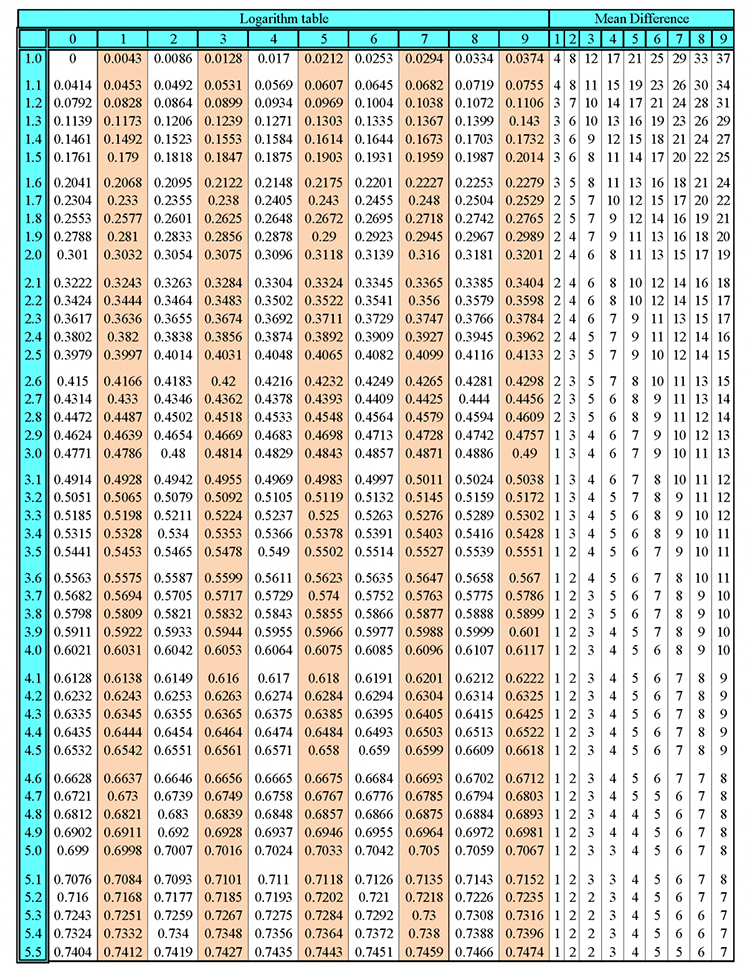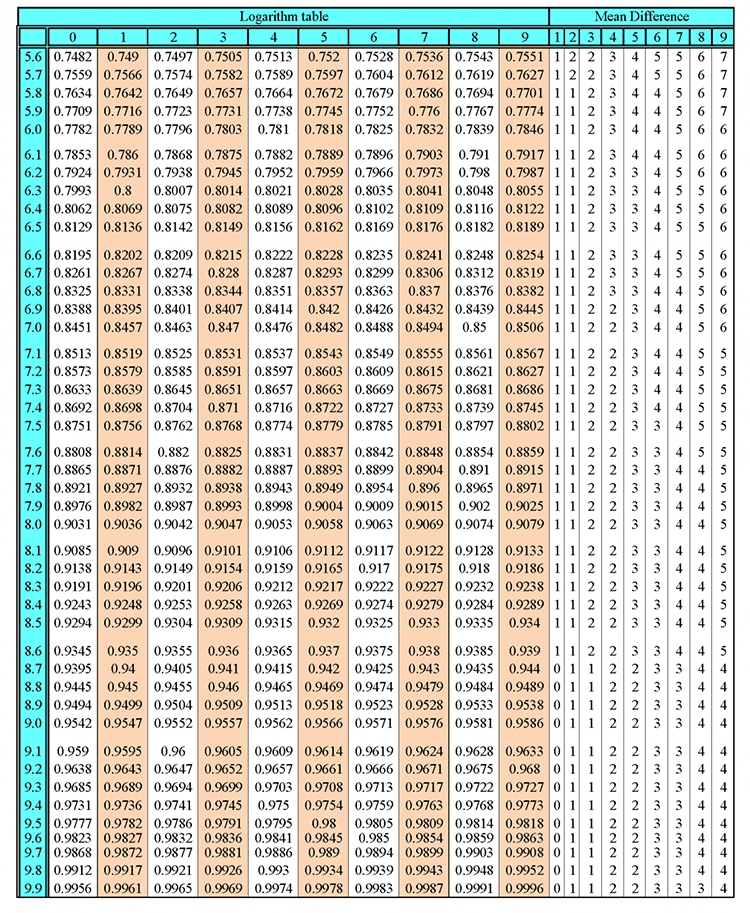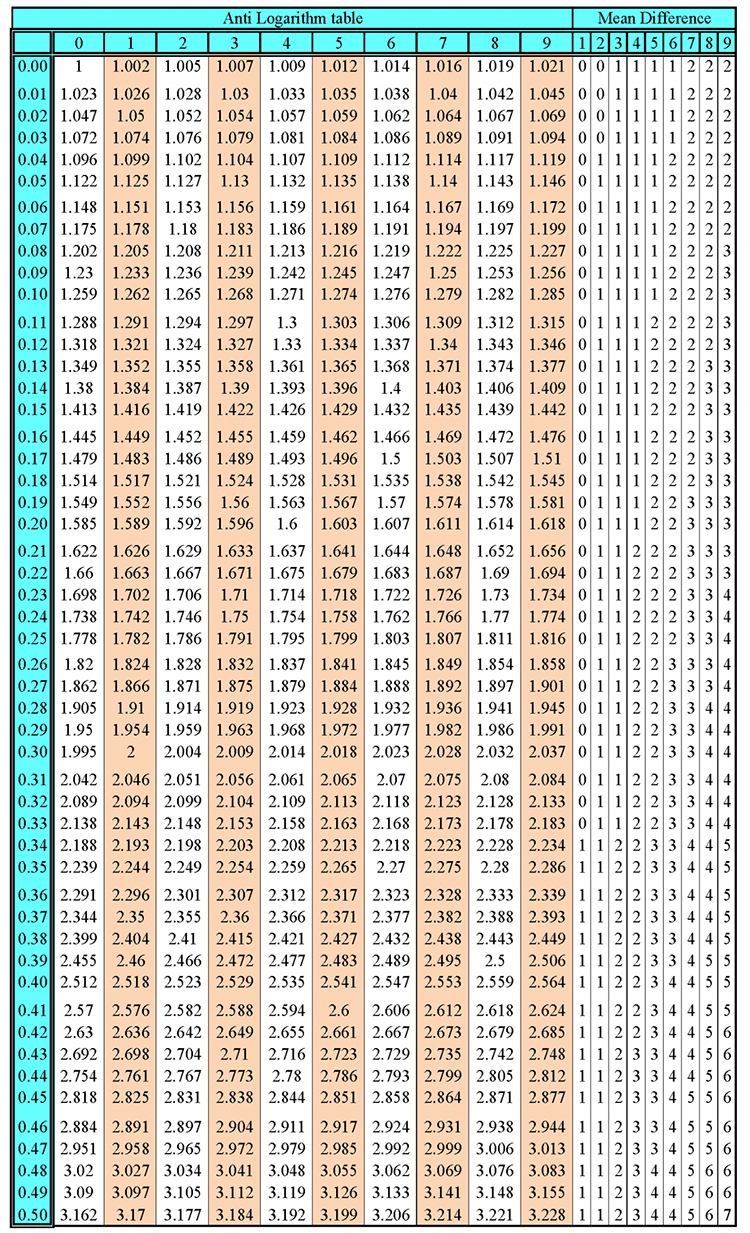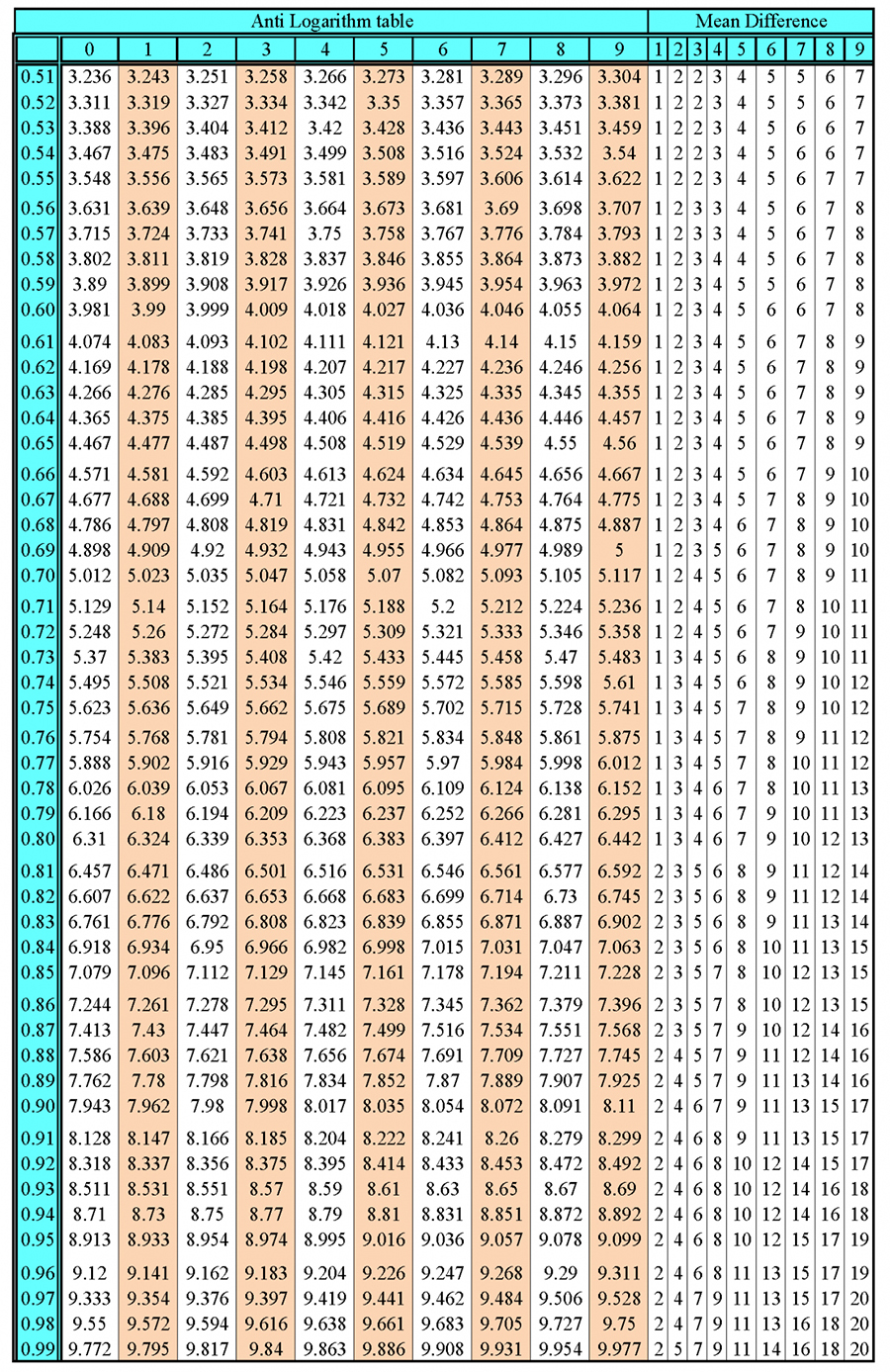Using the standard deviation formula
The standard deviation formula is:
Standard deviation `=sigma=sqrt((Sigma(x-bar x)^2)/(n-1))`
For any set of values to find the standard deviation you should:
1. Find the mean (of all the numbers) `= barx`
2. Subtract the mean (from each number) `= x-barx`
3. Square the result (of each of the above) `= (x-barx)^2`
4. Add the results up (Add) `=sum(x-barx)^2`
5. Divide (the result) by the number of data values minus one `=(sum(x-barx)^2)/(n-1)`
6. Take the square root of the result `=sqrt((sum(x-barx)^2)/(n-1))`
Example 1
What is the standard deviation for the following set of data?
15, 15, 15, 14, 16
The process is as follows:
i. Find the mean: `(15+15+15+14+16)/5=75/5=15`
ii Subtract the mean from each of the data points:
|
`15-15` |
`15-15` |
`15-15` |
`14-15` |
`16-15` |
|
`0` |
`0` |
`0` |
`-1` |
`1` |
iii. Square the result:
|
`0^2=0` |
`0^2=0` |
`0^2=0` |
`-1^2=1` |
`1^2=1` |
iv. Add the results up:
`0+0+0+1+1=2`
v. Divide by the number of data points less one.
Therefore `2/(5-1)=2/4=0.5`
vi. Square root the result:
`sqrt0.5=0.707`
Answer:
The standard deviation for the above data = 0.707
That is 68% of all the data is within 0.707 of 15.
Example 2
What is the standard deviation for the following set of data?
2, 7, 14, 22, 30.
The process is as follows:
i. Find the mean: `(2+7+14+22+30)/5=75/5=15`
ii. Subtract the mean from each of the data points:
| `2-15` | `7-15` | `14-15` | `22-15` | `30-15` |
| `-13` | `-8` | `-1` | `7` | `15` |
iii. Square the result:
| `-13^2=169` | `-8^2=64` | `-1^2=1` | `7^2=49` | `15^2=225` |
iv. Add the results up:
`169 + 64 + 1 + 49 + 225 = 508`
v. Divide by the number of data points less one.
`508/(5-1)=508/4=127`
vi. Square root the result:
`sqrt127=11.3`
Answer:
The standard deviation for the above set of data = 11.3
That is 68% of all the data is within 11.3 of 15.




